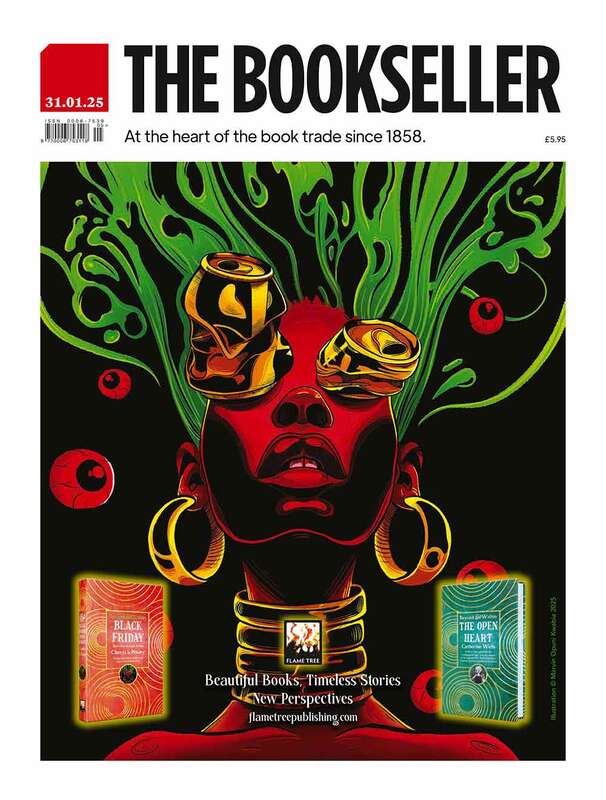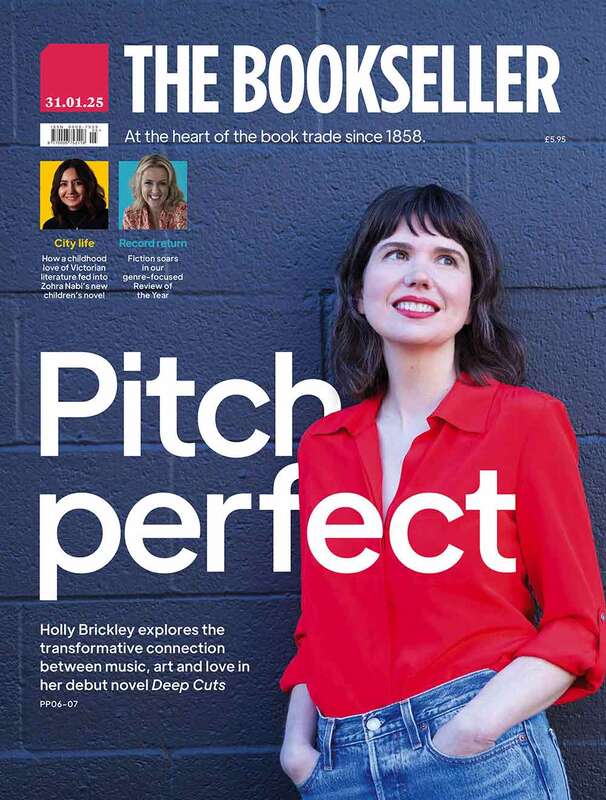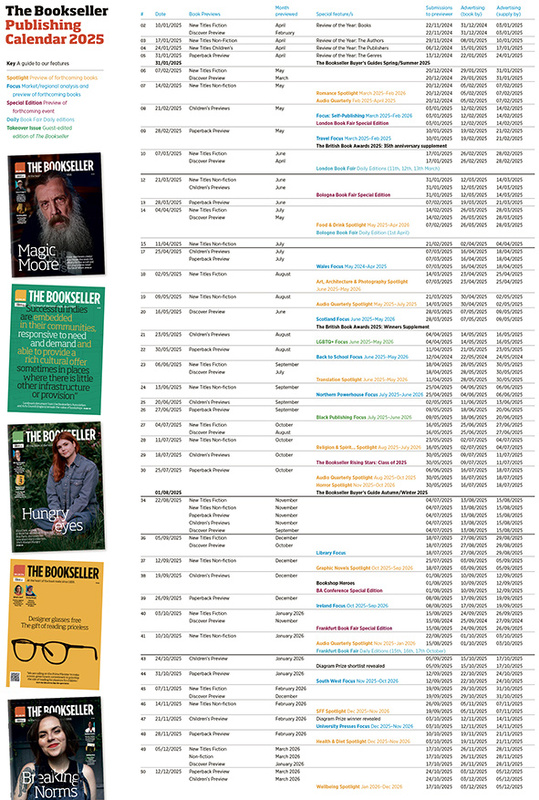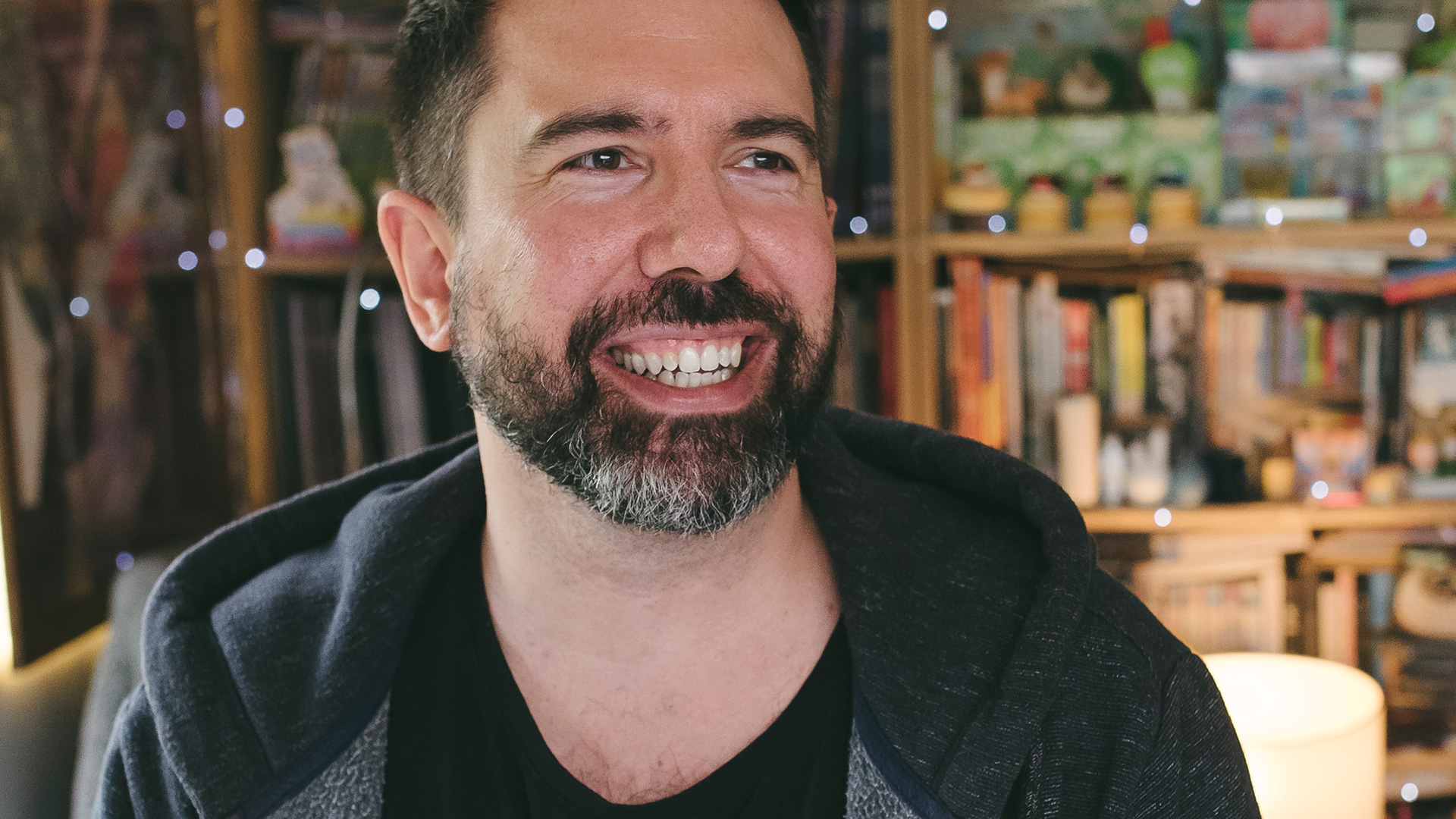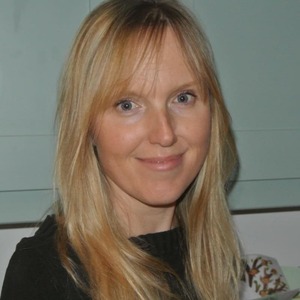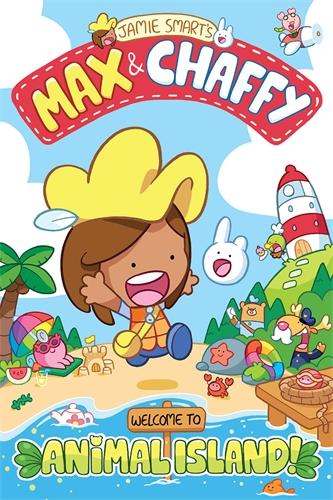You are viewing your 1 free article this month. Login to read more articles.
Jamie Smart on becoming a number one bestseller his new series and love of comics
King of comics Jamie Smart on becoming a number one bestseller, juggling multiple projects and launching his newest series of adorable characters.
Breaking through the celebrity stronghold that tops the Nielsen BookScan Children’s chart is no mean feat, but days before I’m due to interview Jamie Smart, the comic creator has done just that, scoring his first number one bestseller with Bunny Vs Monkey: Multiverse Mix Up. “It’s amazing, it’s so weird,” he laughs, speaking over video call from his Kent home. “It hasn’t computed yet.” Although Smart has been creating comics for more than 20 years, the past two years have seen his star rise rapidly, shifting more than 300,000 books in that period, according to publisher David Fickling Books (DFB), and attracting similar numbers to his drawing videos on YouTube.
And 2023 promises to be another exceptionally busy year for Smart. DFB is pulling together his book publishing under the banner “Laugh Yourself Silly with Jamie Smart,” planning consumer and partner advertising and the launch of a major new series, Max and Chaffy. Aimed at a slightly younger readership than his existing books, the series begins with Welcome to Animal Island in May, followed by The Great Cupcake Mystery in August and Search for the Ice Chaffy in November. The books follow a girl, Max, who loves finding things and discovers her very own “Chaffy” when her family moves to an island. Chaffies are, explains Smart, “very cute, little, round, white creatures with one and a half ears, who are always getting lost and turning up in places they shouldn’t.” Max’s Chaffy also loves finding things, so the pair team up, solving problems and helping other characters find their own perfect Chaffy companions; the message is very much that there’s a best friend out there for everyone. For added interaction, “search and find” puzzle spreads are dotted through each story. It’s all very warm and charming, bursting with bright primary colours, cute characters and, of course, plenty of Smart’s trademark silliness.
To do something more coherent and innocent should be quite a shift but it’s not. At its core it’s still cute characters having fun adventures and being silly
The character of Chaffy first emerged back in 2005. “I wanted to do something that would take my characters off the page and put them in the real world,” Smart recalls. He created 10 soft toys of the character and sent them around the world, asking people to take a photo of wherever the Chaffy was found and then pass it on to someone else. “The hope was that slowly these Chaffies would travel around the world and perhaps find their way back to us, but they didn’t because everyone kept them!” Over the years Smart has further explored the idea of Chaffies in “an ongoing campaign” which has included a picture search book, internet memes and a Find Chaffy website filled with animations, cartoons and fan art. Pondering where to go next, Smart and his publisher saw an opportunity to fill a gap in the graphic novel market for 5–7 year olds. “We wondered, is there a way we can introduce this very cute character and tell very simple stories and then expand it with more characters after that, using Chaffy as the anchor point?” Smart drew a “massive” 30-page comic, working with his publisher to age it down slightly. Smart’s humour is notoriously anarchic: did he have to rein himself in for that younger age group? “I understand why you ask that,” he laughs, “but no. To do something more coherent and innocent should be quite a shift but it’s not. At its core it’s still cute characters having fun adventures and being silly.’
Smart grew up in the 1980s when many weekly children’s comics were still available: the Beano, the Dandy, Whizzer and Chips. He has fond memories of Oink!, a comic launched to be deliberately anarchic, similar to Viz but for children. “It was very rude and quite violent,” he recalls, “but it really pushed the boundaries and I loved it.” At art college he discovered alternative comics including Tank Girl, Deadline and Milk and Cheese. “I leant into that a bit and started doing my own alternative comics, but I gravitated back towards kids’ comics. You can still do whatever you want in a children’s comic. You can still make it very rude and silly and rambunctious and kids love it for that.” His first weekly children’s comic was in the Sunday Times’ children’s supplement the Funday Times, before moving on to a decade at the Dandy, eventually followed by David Fickling Comics, which later became the Phoenix. Creating comics is, he happily admits, “the best job in the world. I haven’t really known how to do anything else, I’m very glad it’s all worked out!”
Breaking into the mainstream
Smart has been drawing Bunny vs Monkey “pretty much every week” in the Phoenix for the past 10 years and, his legions of fans will be relieved to hear, he has no plans to stop. The comics first appeared in book form in 2014, in thinner volumes, but it was when DFB repackaged them into a chunkier graphic novel format that sales really took off. The new format feels very satisfying, he thinks, each containing a whole year’s worth of strips, allowing readers to see the seasons change in the woods. Also in the Phoenix he creates the surreal Looshkin and a newer alien series, Megalomaniacs. Then there’s Flember, his first venture into more traditional middle-grade fiction. So how does he have time for so many projects? “It’s prioritising, all schedules… but the will is there!” He now works with colourists, building a team to help put out as many comics as possible.
I’ve always known that kids love comics but they need to be shown them. It really activates their imagination
The potential of children’s graphic novels has been talked about for years in publishing but it’s only now that the genre has broken into the mainstream so dramatically. “There’s a kind of renaissance happening,” Smart agrees, “I couldn’t be happier. I really hope it grows even more and that publishers put their faith in comic creators and support them to keep going.” Smart has long rejected the idea that comics are less appealing to children in the digital age. “I’ve always known that kids love comics but they need to be shown them. It really activates their imagination.”
For a long time, the conversations centred around the idea of hooking reluctant readers, or as a gateway to “harder” books. But Smart asserts that they are very much a medium in their own right, appealing to a wide range of children. “It’s hard to pin down specifically what’s so brilliant about comics because they’re such a visceral medium. It’s so immediate, so bright and colourful and you don’t need any understanding, necessarily, of the language of how comics work. It’s like a custard pie in the face, an immediate hit and I think that’s why kids respond to it so easily.”

